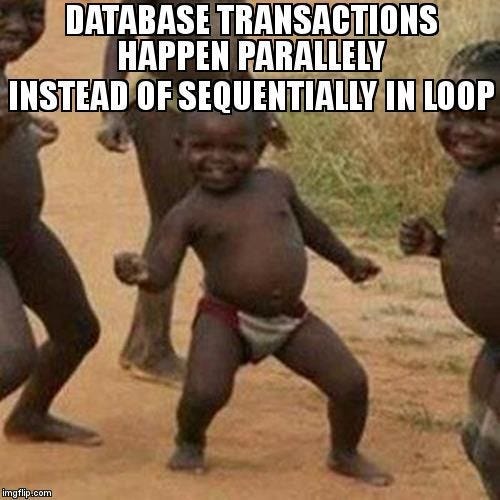Understanding Transaction Isolation in Distributed Systems
Written on
Chapter 1: Introduction to Concurrency
In the realm of high-performance enterprise software development, concurrency is an essential aspect. It allows for the simultaneous execution of multiple operations, maximizing hardware utilization. While concurrency brings significant advantages, it also introduces complexities. The challenge lies in ensuring that parallel operations do not access shared resources without appropriate locks or mutexes, thus avoiding race conditions.
To illustrate this, consider a database where multiple threads or processes attempt to access the same data simultaneously, potentially leading to dirty reads. One might think, "What about transactions?" Indeed, transactions are crucial, but their effectiveness can be compromised by the chosen transaction isolation policies.
Chapter 2: What is Transaction Isolation?
Transaction isolation refers to the process of keeping concurrent transactions separate to uphold ACID (Atomicity, Consistency, Isolation, Durability) principles. A transaction encompasses a series of database operations treated as a single unit. If any operation fails, the entire transaction can be rolled back, ensuring no unintended changes to the database.
There are four primary levels of transaction isolation:
- Read Uncommitted
- Read Committed
- Repeatable Read
- Serializable
Let’s delve into each level.
Section 2.1: Read Uncommitted
At this level, a transaction can read uncommitted changes made by other transactions. For example, if Transaction A reads a social media view count that Transaction B has just modified but not yet committed, it might see an incorrect value (e.g., 367) if Transaction B later rolls back its changes (leaving the count at 360). This scenario illustrates a "dirty read."

Advantages and Disadvantages
While this level allows for the fastest execution due to minimal checks, it offers the lowest degree of isolation, making dirty reads a significant concern.
Recommendation
This level is suitable for scenarios where performance is prioritized, and occasional inaccuracies can be tolerated, such as tracking social media views.
Section 2.2: Read Committed
In this isolation level, a transaction can only read records that have been committed. This means that dirty reads are eliminated. For instance, if Transaction B is writing comments on a post, Transaction A can only read those comments after they are committed.
However, it’s important to note that repeated reads can yield different results if changes are committed in between those reads, leading to inconsistent results.
Advantages and Disadvantages
Though it improves isolation by preventing dirty reads, the risk of inconsistent results still exists, making it slower than Read Uncommitted but faster than other levels.
Recommendation
This is a good choice for systems that wish to avoid dirty reads while still maintaining reasonable performance, such as reading comments on a social media platform.
Section 2.3: Repeatable Read
At this level, once a record is read, it is stored as a local copy within the transaction's scope. This means that even if another transaction modifies the record, the original transaction will not be affected by those changes. This isolation level prevents both dirty reads and inconsistent repeated reads.
However, one must be aware of "phantom reads," where new records can appear after the initial read. For instance, if Transaction A queries the number of booked seats and Transaction B adds more bookings, subsequent reads may yield different totals.

Advantages and Disadvantages
While repeatable reads enhance isolation, they can introduce phantom reads, which are not mitigated by this level.
Recommendation
This level is ideal for systems that require consistent repeated reads and can accept a performance trade-off, such as reservation systems.
Section 2.4: Serializable
This highest level of isolation ensures that all transactions are executed one after another, completely eliminating the possibility of phantom reads.

Advantages and Disadvantages
Although this level provides the utmost isolation, it is the slowest due to the lack of concurrency, making it suitable for critical systems like banking.
Recommendation
Use this isolation level when data integrity is paramount, even at the expense of performance.
Chapter 3: Conclusion
Every system demands a tailored approach to transaction isolation, requiring careful consideration of concurrency management. The relationship between performance and isolation is pivotal; generally, higher isolation levels result in slower transaction execution.
For further insights into software development and engineering practices, feel free to follow my content on Medium.
Explore the fundamentals of transaction isolation in distributed systems through this video.
This video details the ACID properties and potential pitfalls in transaction management.